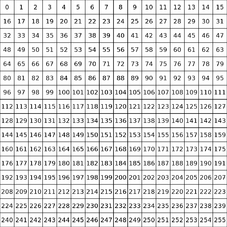Automapper/zh: Difference between revisions
Zerol Acqua (talk | contribs) Created page with "自动贴图的文件名'''必须'''和方块集的文件名保持一致。" |
Zerol Acqua (talk | contribs) Created page with "Grass 自动贴图<ref name="Grass automapper">[https://github.com/ddnet/ddnet/blob/0abb32514b6e9643154dc6bcdc4a754defbf2321/data/editor/automap/grass_main.rules#L1 Grass 自动贴图]</ref>:" |
||
| Line 12: | Line 12: | ||
自动贴图的文件名'''必须'''和方块集的文件名保持一致。 | 自动贴图的文件名'''必须'''和方块集的文件名保持一致。 | ||
Grass 自动贴图<ref name="Grass automapper">[https://github.com/ddnet/ddnet/blob/0abb32514b6e9643154dc6bcdc4a754defbf2321/data/editor/automap/grass_main.rules#L1 Grass 自动贴图]</ref>: | |||
Grass | |||
<pre> | <pre> | ||
Revision as of 12:01, 8 February 2025
自动贴图是一个方便作者制作地图的工具。只需在贴图层简单地制定并应用一些贴图规则,就能省去手动在冻结区域边角放置圆角贴图的麻烦。每种贴图规则需要指定方块类型,但是单个方块类型可以预设多种规则以备选用。所有规则文件位于游戏路径下data/editor/automap/[1][2]
规则文件
每个包含自动贴图的方块集都有一个 tileset.rules 文本文件。每个 tileset.rules 文件可以包含多个自动贴图。规则文件大致遵循 INI 文件格式。文件中每个自动贴图以 [automapper_name] 开头。例如,在文件 grass_main.rules 中,有一个名为 Grass 的自动贴图,它在文件中以 [Grass] 开头。要使用它,您需要在地图编辑器中创建一个使用 grass_main 方块集的图层。右键单击 Layers 并选择“Auto map”,然后点击“Grass”开始自动贴图。
自动贴图的文件名必须和方块集的文件名保持一致。
Grass 自动贴图[3]:
[Default] Index 1 #top Index 16 Pos 0 -1 EMPTY ...
处理过程
The automapper will read the rules file and scan each position of the layer. If every rule of a selected tile applies, the tile will be placed at the scanned position of the automapper. If multiple tiles and their rules match, only the latest rule will apply (because it will be overwritten). Unless deactivated, the automapper will put it's changes into a buffer first and apply them afterwards.

方块索引
Every tileset has 16 rows and 16 columns and each tile can be addressed by its index. The index of a tile is a direct result of it's position and can be calculated by index = 16 * row + column, where row and column is between 0 and 15. The tile at index 0 is always considered EMPTY. Usually this part doesn't contain textures in tilesets. Each other tile is always considered FULL, even if it doesn't contain any textures and is fully transparent.
The index is used for the INDEX keyword of the automapper.
语法
Naming your automapper-rule:
Similar to ini-files, you can create your own section for your automapper rule:
[your-automapper-rule]
Multiple index selections followed by rules can be part of a section.
Writing a comment:
#this is a comment
Selecting a tile you want to place:
INDEX 42
This selects tile 42 (meaning the 3rd row and 11th column. Multiple indices can be selected by adding an OR between each index:
INDEX 42 OR 43
Modifying the tile:
Index 42 XFLIP YFLIP ROTATE
XFLIP mirrors the tile vertically and YFLIP mirrors the tile horizontally. ROTATE rotates the tile a single time by 90°.
IF you want to rotate a tile by 180°, you only need to set XFLIP and YFLIP but not ROTATE.
If you want to rotate by 270°, you need to set XFLIP, YFLIP and ROTATE.
Tile modifications are always in the same line as the selection.
Rule for placing the tile:
The selected tile gets placed if all following rules apply. A rule for placing the tile always starts with coordinates followed by a rule:
POS 0 -1 FULL
This rule selects the tile with X coordinate 0 and Y coordinate -1 relative to the scanning position of the automapper. If the tile above the scanning position is FULL, the selected tile will be placed (if all following rules apply). If it's EMPTY, it won't be placed.
Instead of using FULL or EMPTY, you can select another tile with the INDEX keyword:
POS 0 -1 INDEX 12
If the tile above the scanning position has index 12, it will be placed. Multiple indices can be selected by adding an OR between each index:
POS 0 -1 INDEX 12 OR 13
Similarly NOTINDEX can be used to exclude a tile.
Random rule:
You can make a selected tile randomly apply to rules by adding a random rule:
RANDOM 20%
The random rule expects a value between 0% and 100%. This value represents the probability, that a tile is placed[4].
If you put a value into it without a % symbol, the probability will not be parsed in terms of percentages, but with this formula:
percentage = 1.0 / value
This allows for rarer tile placements with probabilities between 0% and 1% and a value > 100.
For example RANDOM 150 will have a probability of 1.0 / 150 ≈ 0.67 (percent).
Default condition rule:
By default the game assumes, that you want to apply each rule to a full tile, meaning that the following rule is always implied:
POS 0 0 FULL
You can deactivate this by adding the following line under the tile selection:
NoDefaultRule
NewRun:
Adding NewRun in a section will make the section run an additional time for each time this keyword gets added to the section. This can be used to set some basic tiles in the first run, and more complex ones in the second.
NoLayerCopy:
Adding NoLayerCopy in a section will cause it to run in-place. This can drastically improve performance, because the automapper doesn't copy it's changes into buffer memory before applying it. But it can cause unintended side effects!
工具
Some tools in order to create automapper rules exist:
- SimpleDDNetAutomapper - a small UI application, which tries a more user friendly approach for very basic rules and tilesets. It does not support randomness, or
POS INDEXrules, butEMPTYandFULL. - Teeworlds Web Editor - Automapper edit and live-preview[5].
- rpp - rules++ is a small experiment, aiming to make mappers utterly lazy, by unlocking the full potential of DDNet's rules. It is meant to be simple, readable and most importantly correct, everything else is irrelevant[6].
